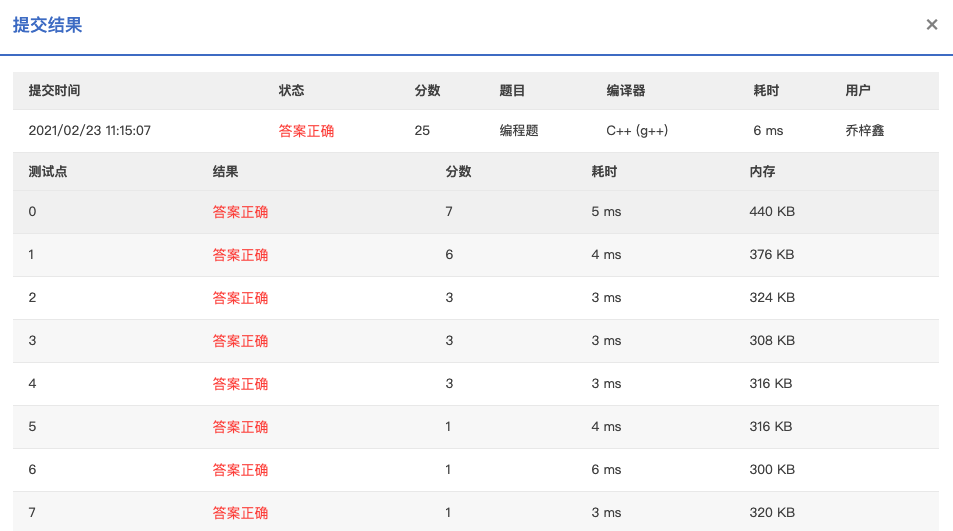题目大意
给定一棵含有N个节点的二叉树,判断是否是完全二叉树
算法思路
判断一颗二叉树是否是完全二叉树的规则:
- 1、如果出现只有右孩子节点的,一定不是
- 2、如果出现只有左孩子或者没有孩子节点的,记录该情况
- 3、如果当前有孩子,并且出现了情况2,一定不是
- 4、遍历树中所有节点后,如果没有1和3,表明该树为完全二叉树
遍历方式采用层序遍历。在遍历过程中使用count记录遍历的节点个数,在count=N的时候说明来到了最后一个节点,使用lastNode记录。
对于根节点的确定可以使用一个father数组记录每一个节点的父节点编号,初始化全部为-1,在输入结束后,遍历一遍,第一次遇到-1的编号就是根节点。
提交结果
AC代码
#include <cstdio>
#include <iostream>
#include <queue>
using namespace std;
struct Node{
int left = -1;
int right = -1;
int index{};
}nodes[25];
queue<Node> que;
int lastNode;
bool isComplete(int root,int N){
que.push(nodes[root]);
bool flag = false;// 标记是否出现情况2
int count = 0;
while(!que.empty()){
Node t = que.front();
que.pop();
++count;
if(count==N){
// 最后一个节点
lastNode = t.index;
}
if(t.left==-1&&t.right!=-1) {
// 情况1
return false;
}else if(t.left!=-1||t.right!=-1) {
// 当前节点有孩子
if(flag){
return false;
}
}else if((t.left!=-1&&t.right==-1)||(t.left==-1&&t.right==-1)){
// 只有左孩子或者没有孩子
flag = true;
}
if(t.left!=-1){
que.push(nodes[t.left]);
}
if(t.right!=-1){
que.push(nodes[t.right]);
}
}
return true;
}
int main() {
int N;
scanf("%d",&N);
int father[N];
for(int i=0;i<N;++i){
father[i] = -1;
}
string left,right;
for(int i=0;i<N;++i){
cin>>left>>right;
nodes[i].index = i;
if(left!="-"){
int leftChild = stoi(left);
father[leftChild] = i;
nodes[i].left = leftChild;
}
if(right!="-"){
int rightChild = stoi(right);
father[rightChild] = i;
nodes[i].right = rightChild;
}
}
int root = 0;
for(int i=0;i<N;++i){
if(father[i]==-1){
root = i;
break;
}
}
if(isComplete(root,N)){
printf("YES %d",lastNode);
}else{
printf("NO %d",root);
}
return 0;
}

**粗体** _斜体_ [链接](http://example.com) `代码` - 列表 > 引用。你还可以使用@来通知其他用户。